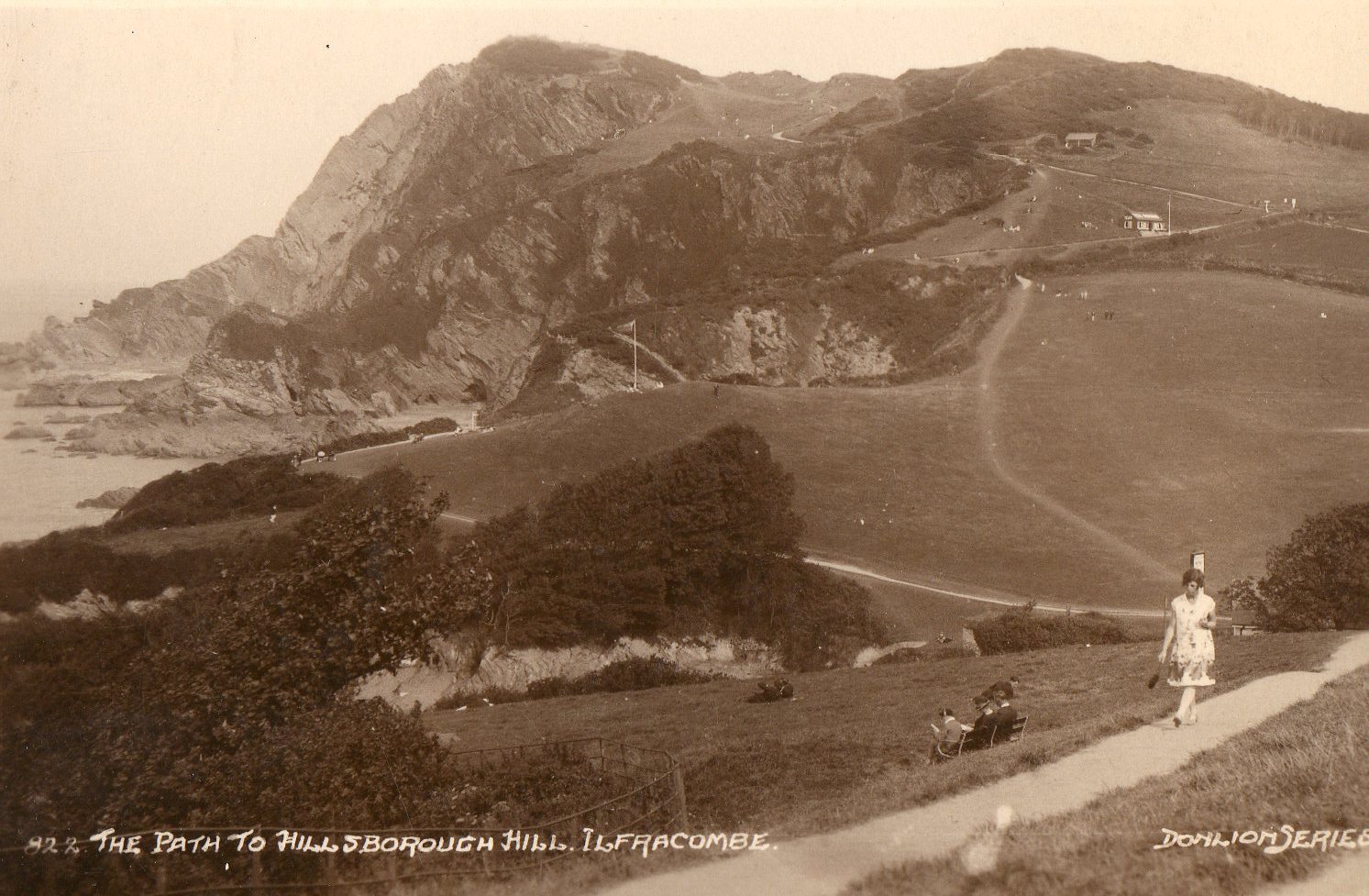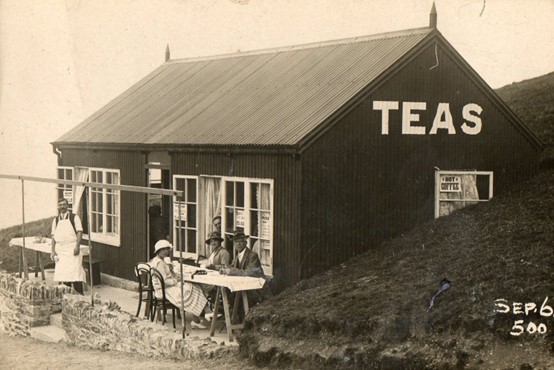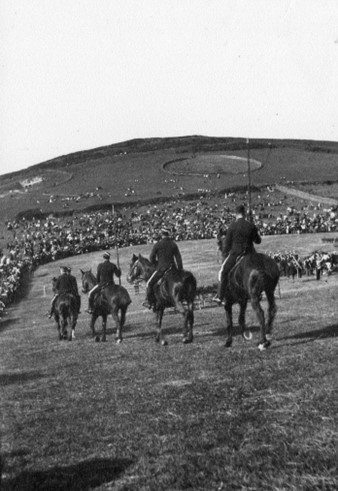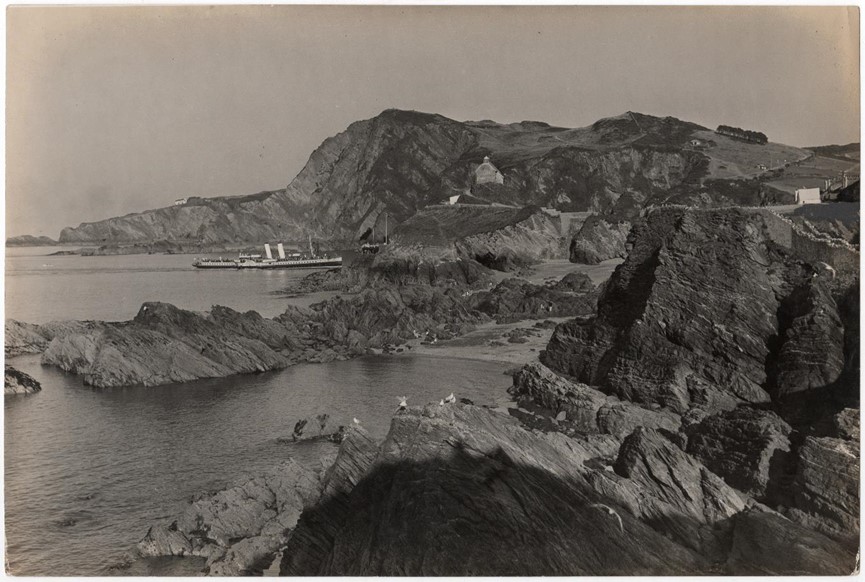
The origins of Hillsborough Local Nature Reserve can be found in the late Victorian era, when the site was purchased by Ilfracombe Urban District Council in 1895, to save it from being built on and to provide visitors and locals with an area to enjoy quiet informal recreation
This was quite ground-breaking at the time and it pre-dated National Park and AONB designation, in fact the National Trust was only set up in this year and its initial work centred around saving historic houses.
However, Hillsborough was not the first piece of undeveloped land surrounding the town to be purchased in this way and the origins go back much further. In the mid-19th Century when Ilfracombe was promoting itself as a town to visit to enjoy the health benefits of the sea to well-to-do Victorians, the town was in the grip of a Cholera epidemic.
This resulted in several benefits to improve public health, including the building of the Slade reservoirs above the town to provide clean drinking water and the purchase of Capstone Hill by the Ilfracombe Board of Health in 1867, in order to provide healthy exercise.
By the early 1900’s the town was ringed by a number of green open spaces, providing both visitors and locals alike the opportunity to walk the undeveloped countryside surrounding the town. Sites such as the Cairn, above the Old Railway Line, now owned by North Devon Council and the Torrs, now owned by the National Trust allowed many to walk the countryside, particularly along the spectacular North Devon Coast. Many of the impressive walkways on the Torrs, the Cairn and on Hillsborough itself were created by the Victorians.
Hillsborough had always been a popular place to visit and many artists and photographers climbed its heady heights to paint and record the town and harbour of Ilfracombe below. One of the earliest photographs in Ilfracombe Museum is an image of Ilfracombe taken from Hillsborough in 1865. However, due to the rapid expansion of Ilfracombe as it became a fashionable Victorian seaside resort, there was great pressure by developers to build on it. Originally, visitors to Ilfracombe largely came in by paddle steamer, but by 1874 the railway came to Ilfracombe and from then on, the town rapidly expanded, especially as the railway offered passage to Ilfracombe for the less well off.
On June 1st 1895 the North Devon Gazette & Observer reported that Hillsborough had been “saved from the builders hands”
A NEW PARK FOR ILFRACOMBE, PURCHASE OF THE HILLSBOROUGH ESTATE. Hillsborough Estate – a most lovely spot – is saved from the builder’s hands. Hillsborough Estate – which commands the most charming landscapes and marine views in the kingdom – is saved from private speculators. Hillsborough Estate – full of grandeur, is now owned by the Ilfracombe people. The whole of the property has been bought by the members of the Ilfracombe District Council for the townspeople for ever at the price of £7,500, and the purchase is one which no sensible ratepayer can grumble at – in fact it is a bargain. Hillsborough Estate, which the council has secured for the town, comprises in reality over 100 acres, 60 acres of which is grazing land, the remaining 40 acres or more being rocks, cliffs, etc
During the next few years about 3 miles of pathway were dug and laid out, together with a number of follies and shelters. In fact, the shelter that overlooks Ilfracombe Harbour was built in the late 1890’s.

Some archive pictures show a constructed tearoom on the lower slopes of Hillsborough, however this is not part of the Victorian advancements. It was built in 1920 when the franchise to run it was given to a Mr Whidden. It remained on site until the late 1930’s when it is said the structure was blown over the cliff edge. The remains of the concrete foundations can still be seen next to the coast path today.
Hillsborough was not only popular with people to go walking: the lower slopes, on what now is known as Brimlands Playing Fields, including the modern Rugby Ground and Swimming Pool, were used to hold local military reviews in the late 1890’s and early 1900’s.
A local Volunteer Gun Battery was formed and was in existence by 1875, and it had established a two-gun battery above Beacon Point on the east side of Hillsborough, overlooking Hele Bay.
From the 1880’s the local Militia forces of Volunteers had been raised in both Combe Martin and Ilfracombe, which were to be used in the event of attack from the sea.

These Militia, held military reviews on the area now covered by the playing fields and many archive photos show these reviews and training days taking place.
By 1908 these forces had been organised into the local Territorial Army, who continued to hold reviews on Hillsborough. However, at the commencement of the 1st World War in 1914, the force embarked for France with many soldiers not returning.
In some of the pictures of the review, on the higher slopes of Hillsborough can be seen the first planting of trees on the site. Roughly three circular enclosures, created out of stone-faced banks were created in late Victorian times and these were planted up with a varierty of trees, many of them conifers.
This was evidence of the Victorians wishing to plant their own trees and circular enclosures of trees were quite a common feature on big Rural Estates in North Devon, the most famous of which is Bamfylde Clump, just north of North Molton. This was planted in the mid 1800’s by the Fortescue (Castle Hill) estate.

The enclosures on Hillsborough continued to exist until the start of the 2nd World War, but by 1947 all had been removed. The original circular compounds could easily be confused today with remains of Hillsborough in prehistoric times.
For further information visit John Moore’s excellent website about Hele Bay and Ilfracombe.
Victorian Hele Bay, Ilfracombe, north Devon (johnhmoore.co.uk)
Artillery Volunteers, Ilfracombe, north Devon (johnhmoore.co.uk)

